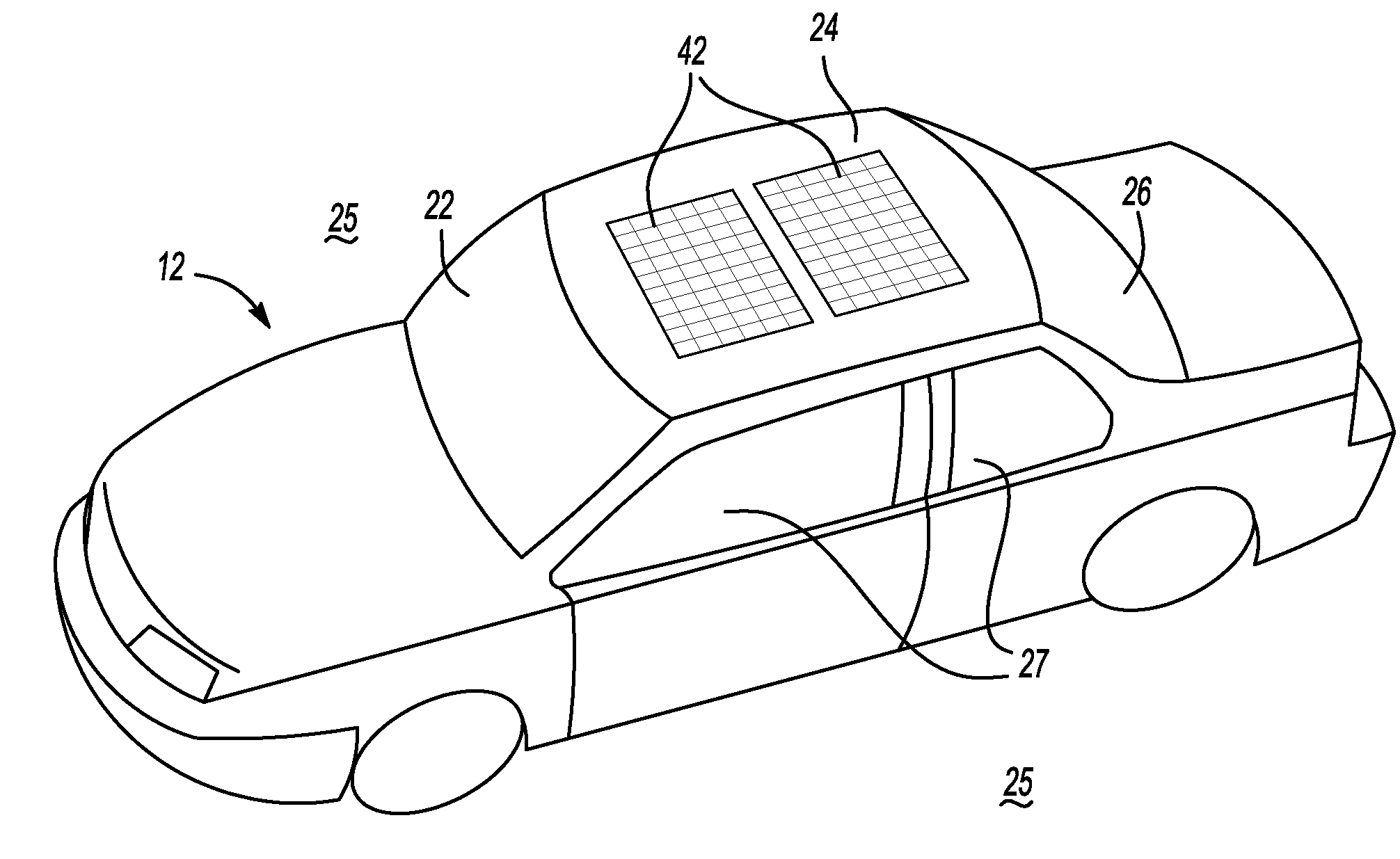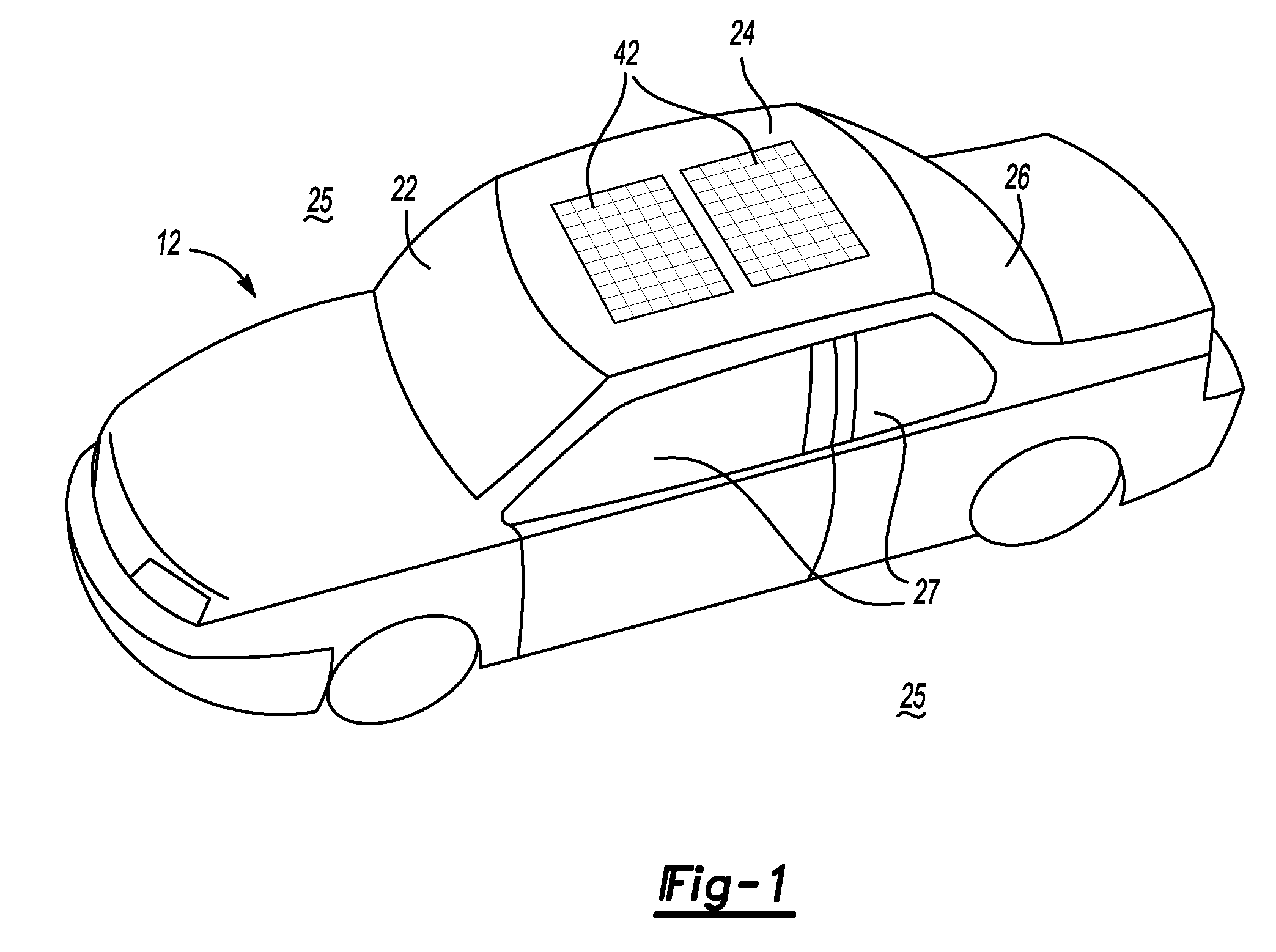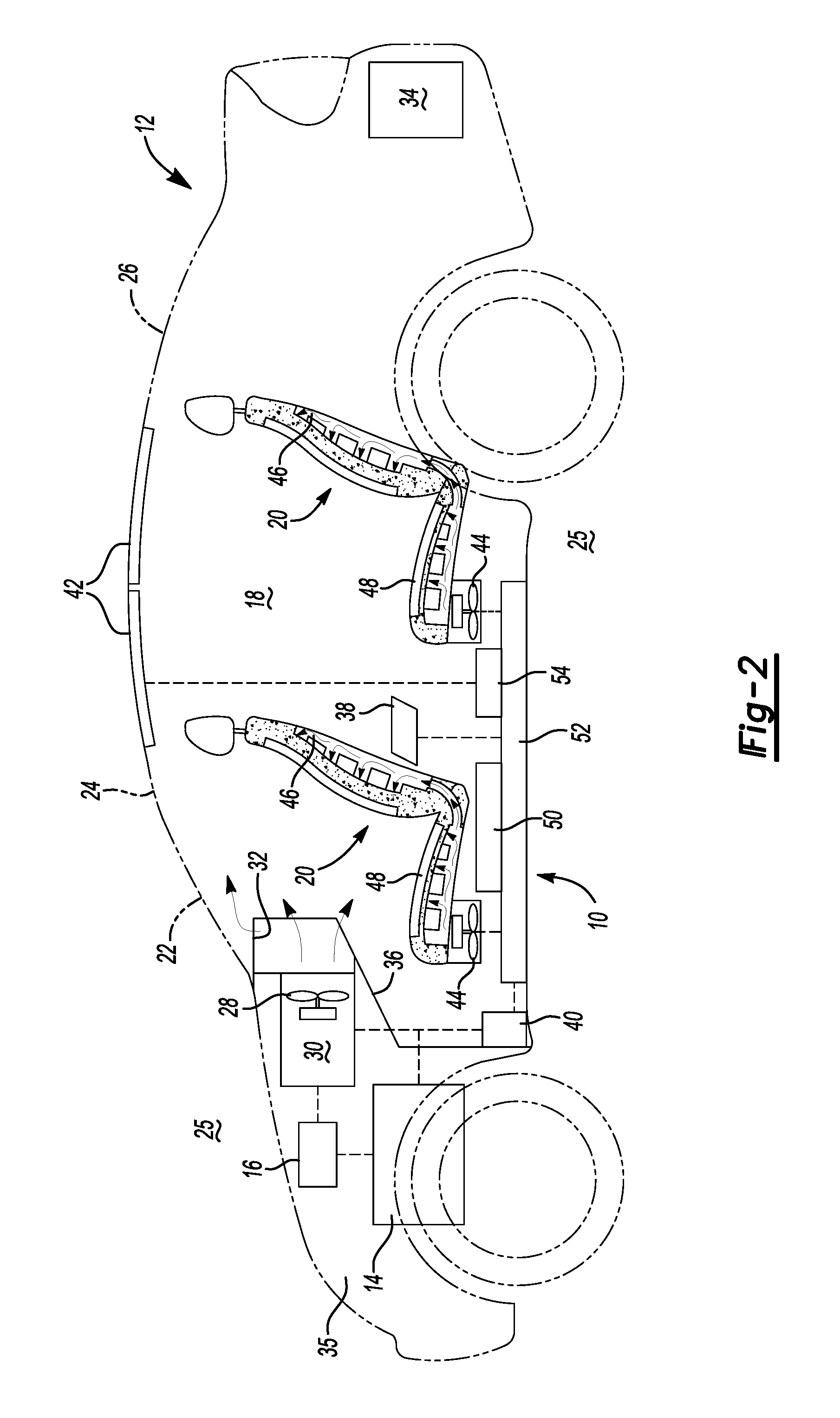System and Method to Reduce Thermal Energy in Vehicle Interiors Subjected to Solar Radiation
a technology of solar radiation and thermal energy, applied in the direction of light to electrical conversion, vessel parts, vessel construction, etc., can solve the problems of increasing increasing interior temperature, and inability to escape thermal radiation created by the increase in interior air and surface temperature, etc., to achieve the effect of reducing thermal energy
- Summary
- Abstract
- Description
- Claims
- Application Information
AI Technical Summary
Benefits of technology
Problems solved by technology
Method used
Image
Examples
Embodiment Construction
[0015]Referring to the drawings, wherein like reference numbers correspond to like or similar components throughout the several figures, there is schematically shown in FIG. 2 an embodiment of a thermal energy reduction system 10 placed in a vehicle 12. Those having ordinary skill in the art will recognize that the thermal energy reduction system 10 may be incorporated into various types of vehicles 12, such as, without limitation: cars, trucks, vans, sport-utility vehicles, et cetera.
[0016]Vehicle 12 has an engine 14, which may be an internal combustion engine or another engine, such as, without limitation: an electric propulsion, hybrid, or fuel cell propulsion system, known to those having ordinary skill in the art. While the vehicle 12 is being driven, the engine 14 provides propulsion and generates power which may be stored in a starter battery 16.
[0017]As will be recognized by those having ordinary skill in the art, the starter battery may provide multiple functions for vehicl...
PUM
 Login to View More
Login to View More Abstract
Description
Claims
Application Information
 Login to View More
Login to View More - R&D
- Intellectual Property
- Life Sciences
- Materials
- Tech Scout
- Unparalleled Data Quality
- Higher Quality Content
- 60% Fewer Hallucinations
Browse by: Latest US Patents, China's latest patents, Technical Efficacy Thesaurus, Application Domain, Technology Topic, Popular Technical Reports.
© 2025 PatSnap. All rights reserved.Legal|Privacy policy|Modern Slavery Act Transparency Statement|Sitemap|About US| Contact US: help@patsnap.com



